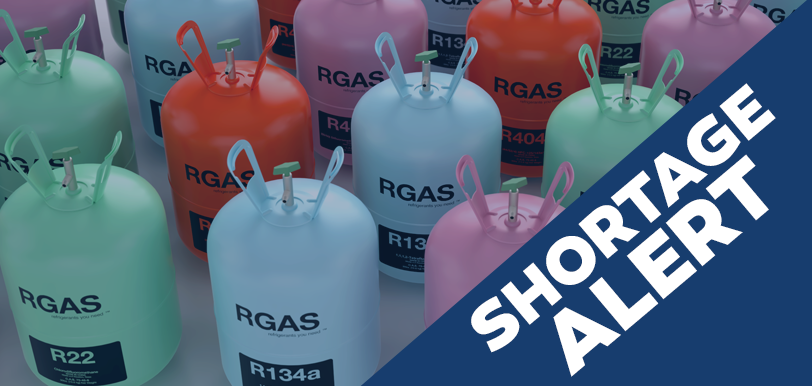Want to save with Paschal? Don’t miss our current offers and specials

Want to save with Paschal? Don’t miss our current offers and specials
Return to Paschal Resource & Education Hub

For much of 2021, we have seen price increases and shortages on a number of commodities & products, many of them linked to the same core commodity shortages amidst unprecedented demand. Like many other industries around the world, the HVAC industry in particular has felt the compounded effects of supply chain disruptions this year. While some analysts predicted a smoothing over of some logistical problems by the end of 2021, it does not seem to be the case for the refrigerant market – which is just one key aspect amongst many that homeowners will feel the impact of. There are a number of factors affecting these price hikes & shortages, that do not primarily include logistical snags.
Presently, China is experiencing a temporary shortage of components that make up R410a refrigerant. The overall shortage is compounded by the demand increase during the summer months, and it is affecting both after-market and OEM suppliers. In addition, major refrigerant manufacturers DuPont, Chemours, and Honeywell have dramatically scaled back production in 2021 due to supply chain and logistical constraints.
On September 23, 2021, the Environmental Protection Agency (EPA) – a US governmental agency, issued a final rule entitled, “Phasedown of Hydrofluorocarbons: Establishing the Allowance Allocation and Trading Program under the American Innovation and Manufacturing (AIM) Act.” Specifically, the AIM Act directs EPA to phase down production and consumption of HFCs to 15% of their baseline levels in a stepwise manner by 2036 through an allowance allocation and trading program.
This final rule is the first regulation under the AIM Act to address HFCs, which are potent greenhouse gases commonly used in refrigerators, air conditioners, and other applications. This final rule sets the HFC production and consumption baseline levels from which reductions will be made, establishes an initial methodology for allocating and trading HFC allowances for 2022 and 2023, and creates a robust, agile, and innovative compliance and enforcement system.


Refrigerant is a compound typically found in either a fluid or gaseous state. It readily absorbs heat from the environment and can provide refrigeration or air conditioning when combined with other components such as compressors and evaporators. If you’ve heard about the R22 refrigerant phase out in favor of R410A refrigerant, you might be especially interested to know more about how refrigerant works and what part it plays in cooling your home. Refrigerants work to cool your home by absorbing heat from the inside air, and then transforms from a low pressure gas to a high pressure liquid. The hot air is then sent outside. The refrigerant then cools down and transforms back to a gas, where outside air is brought in over these cold refrigerant-filled coils, and cooled down before being sent back into your home. There are many types of refrigerants used, and each system has a different refrigerant requirement. The only types used in residential HVAC systems are R22 & R410a, also called by their brand names: “Freon, & Puron.”
R410a is scheduled for elimination from all new systems in 2023. Daikin has announced R-32 as the ideal choice to replace R-410A in the Americas and around the world for many of its key products. Carrier has announced its intention to use R-454B for residential and commercial products. A blend of R32 and R1234yf with a GWP of 466, R454B appears to be the best current option for new equipment in applications where a lower-flammability refrigerant is an option.
Due to the increased demand for refrigerants by the HVAC industry, wholesale costs have risen dramatically for service based companies, and these costs will likely be passed down to the end consumer- most of which are your average homeowner. Expect increases in service fees, and new system costs. If you’re shocked by the increase in prices for groceries on the shelf, & the cost to fill your car with gasoline, then expect that same energy with an increase in refrigerant prices. Since many businesses such as grocery stores also rely on refrigerants to keep food cold in stores, you may be seeing the cost both at home and in your daily errands.